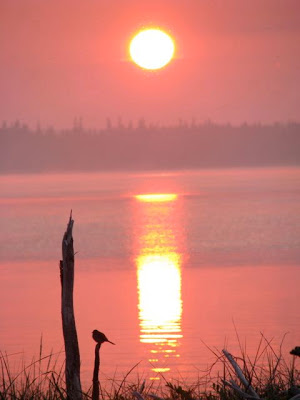Northern Sea Star
(Asterias vulgaris)
A familiar site for me during my forays along the shores of Cape Breton Island,the Northern Sea Star, also called the Purple Sea Star, takes center stage. I know, it isn't purple, but usually it is! It's color depends largely on what it has been feasting upon, and it can range in shades from pink to red to orange.
As carnivores, their favorite food of choice includes mussels and oysters. The majority of sea stars have the most remarkable ability to consume prey - from outside their bodies! They use tiny, suction-cupped tube feet to pry open clams or oysters. Their stomach then emerges from their mouth and oozes inside the shell.
They wrap this stomach around the prey to digest it, and finally withraw the stomach back into their own body.
There are approximately 1600 different species of Sea Stars world wide. Once called "starfish", scientists have changed the name to Sea Star because they obviously are not fish! They are actually echinoderms and are cousins to the sand dollars and and sea urchins! Their spiny outer layer protects them from prey, and they are famous for being able to regenerate a missing limb. Not all Sea Stars have 5 limbs. Some have up to 20, even 40!
Purely marine animals, they use sea water instead of blood to pump nutrients throughout their bodies. And, they don't have a brain! Amazing that they can do all the things they do without a brain.
Those of us with brains should take a lesson!!













